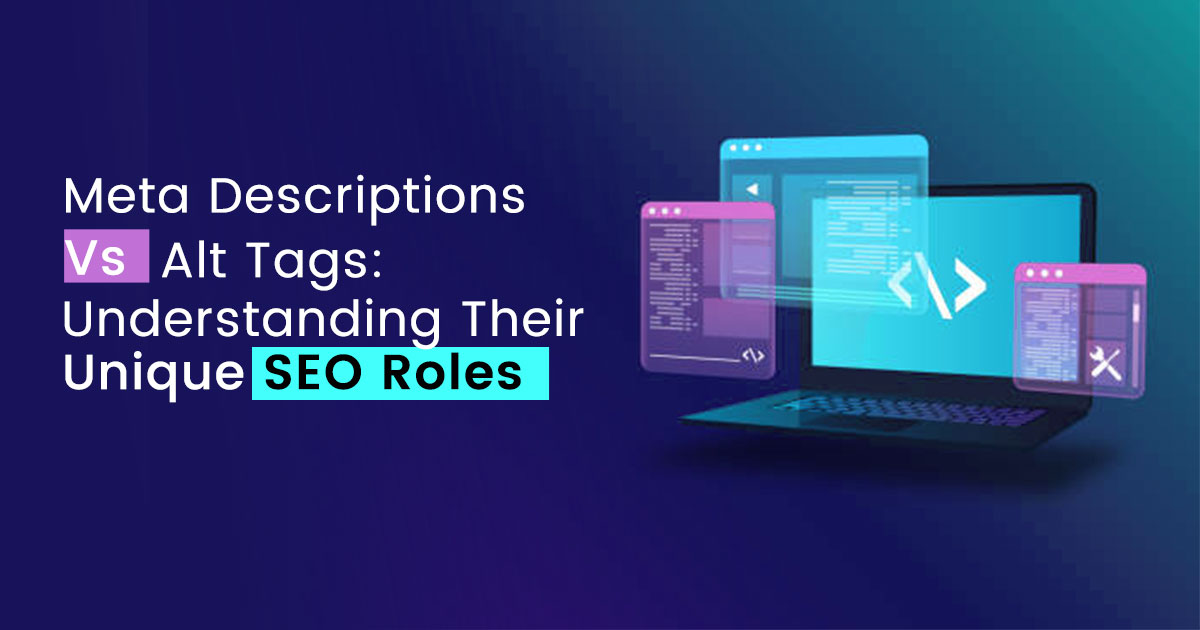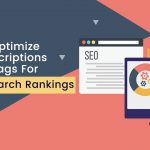Meta Descriptions vs. Alt Tags: Understanding Their Unique SEO Roles
Meta Descriptions vs. Alt Tags: Understanding Their Unique SEO Roles
In the ever-evolving world of SEO (Search Engine Optimization), there are countless strategies, techniques, and elements that contribute to the visibility and ranking of a website. Among these, meta descriptions and alt tags are two critical components that, while often overlooked, play unique and essential roles in enhancing a website’s SEO. Understanding the differences between these two elements and how to utilize them effectively can make a significant impact on your website’s performance in search engine results.
What Are Meta Descriptions?
Meta descriptions are brief summaries of a web page’s content. Typically, these are around 150-160 characters in length and appear under the page’s title in search engine results. They offer a snapshot of what the page is about and, more importantly, entice users to click on the link.
The SEO Role of Meta Descriptions
Meta descriptions don’t directly influence search engine rankings, but they play a crucial role in improving click-through rates (CTR). A well-crafted meta description can be the difference between a user clicking on your link or skipping to another result. Here’s how they work:
- Enhancing CTR: The meta description is often the first impression a potential visitor has of your website. A compelling, keyword-rich description can grab attention and drive more clicks.
- Supporting Keywords: Although Google has stated that meta descriptions are not a ranking factor, including relevant keywords can make your link more appealing to users and help them understand that your page meets their search intent.
- Brand Messaging: Meta descriptions offer an opportunity to convey your brand’s voice and value proposition in a concise format, helping to establish trust and authority in your niche.
- Social Sharing: When pages are shared on social media, the meta description often appears as the preview text, making it a crucial element for social media visibility.
What Are Alt Tags?
Alt tags, or alternative text, are used in HTML to describe the content of an image on a webpage. These tags are essential for web accessibility, as they provide a text alternative for screen readers, allowing visually impaired users to understand what an image represents.
The SEO Role of Alt Tags
Alt tags serve several important functions in SEO, especially when it comes to image search optimization and accessibility:
- Image Search Optimization: Search engines can’t interpret images the way humans do. Alt tags provide a textual description that search engines can use to index and understand the content of the images on your site, improving your chances of appearing in image search results.
- Enhancing Accessibility: For users relying on screen readers, alt tags are vital. They describe the image to those who cannot see it, ensuring that your website is accessible to all users. This is not only good practice but also a legal requirement in many regions.
- Keyword Optimization: Just like meta descriptions, alt tags should include relevant keywords where appropriate. This helps search engines contextualize the image within the broader content of the page.
- Loading Speed Considerations: If an image fails to load, the alt text will appear in its place, giving users an idea of what should be there. This enhances user experience, especially in cases of slow internet connections or technical issues.

Meta Descriptions vs. Alt Tags: Key Differences
Meta Descriptions vs. Alt Tags, While both meta descriptions and alt tags are important for SEO, they serve distinct purposes and are used in different contexts. Here are the key differences:
- Function and Placement:
-
- Meta Descriptions: Located in the HTML header, meta descriptions summarize the content of a webpage. They are displayed in search engine results and influence user behavior.
- Alt Tags: Embedded within the HTML of an image, alt tags describe the content of images. They are used by search engines to understand and index images and by screen readers to assist visually impaired users.
- Impact on User Experience:
-
- Meta Descriptions: Directly impact the likelihood of a user clicking on your link in search results, thus affecting your CTR and overall traffic.
- Alt Tags: Primarily enhance accessibility and assist search engines in indexing images, indirectly supporting the overall SEO strategy.
- SEO Contribution:
-
- Meta Descriptions: While not a direct ranking factor, they contribute to SEO by influencing CTR, which can impact rankings over time.
- Alt Tags: Directly contribute to image search rankings and enhance overall content relevance, which can improve a page’s ranking.
Best Practices for Meta Descriptions
To maximize the effectiveness of your meta descriptions, consider the following best practices:
- Be Concise and Compelling: Stick to the 150-160 character limit and create a description that is both informative and enticing.
- Incorporate Keywords: Use primary keywords naturally within the description, ensuring that it aligns with the user’s search intent.
- Highlight Unique Selling Points: Emphasize what makes your content or offering unique, encouraging users to click on your link.
- Call to Action: Including a call to action (e.g., “Learn more,” “Discover now,” “Get started”) can motivate users to click.
Best Practices for Alt Tags
To ensure your alt tags are effective, follow these guidelines:
- Be Descriptive: Clearly describe the content and function of the image, ensuring it is understandable to users and search engines.
- Use Keywords Appropriately: Incorporate relevant keywords, but avoid keyword stuffing. The text should read naturally.
- Keep it Short: While alt text should be descriptive, it should also be concise. Aim for a balance between detail and brevity.
- Avoid Redundancy: If the image is purely decorative and doesn’t add value to the content, consider using a null alt tag (alt=””) to prevent unnecessary distractions for screen readers.
Meta descriptions and alt tags are both vital components of a comprehensive SEO strategy, each serving unique roles in improving a website’s visibility, accessibility, and user engagement. By understanding their distinct functions and following best practices for each, you can optimize your site for both search engines and users, ultimately driving more traffic and improving your site’s performance. While meta descriptions help capture clicks and convey your brand’s message in search results, alt tags ensure your images are accessible and properly indexed, contributing to a well-rounded, inclusive, and effective SEO strategy.

 Previous Post
Previous Post Next Post
Next Post